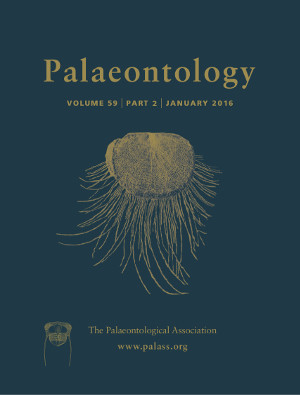Reg. Charity No. 1168330

Appendicular skeletal traits are used to quantify changes in morphological disparity and morphospace occupation across the fish–tetrapod transition and to explore the informativeness of different data partitions in phylogeny reconstruction. Anterior appendicular data yield trees that differ little from those built from the full character set, whilst posterior appendicular data result in considerable loss of phylogenetic resolution and tree branch rearrangements. Overall, there is a significant incongruence in the signals associated with pectoral and pelvic data. The appendicular skeletons of fish and tetrapods attain similar levels of morphological disparity (at least when data are rarefied at the maximum sample size for fish in our study) and occupy similarly sized regions of morphospace. However, fish appear more dispersed in morphospace than tetrapods do. All taxa show a heterogeneous distribution in morphospace, and there is a clear separation between fish and tetrapods despite the presence of several evolutionarily intermediate taxa.